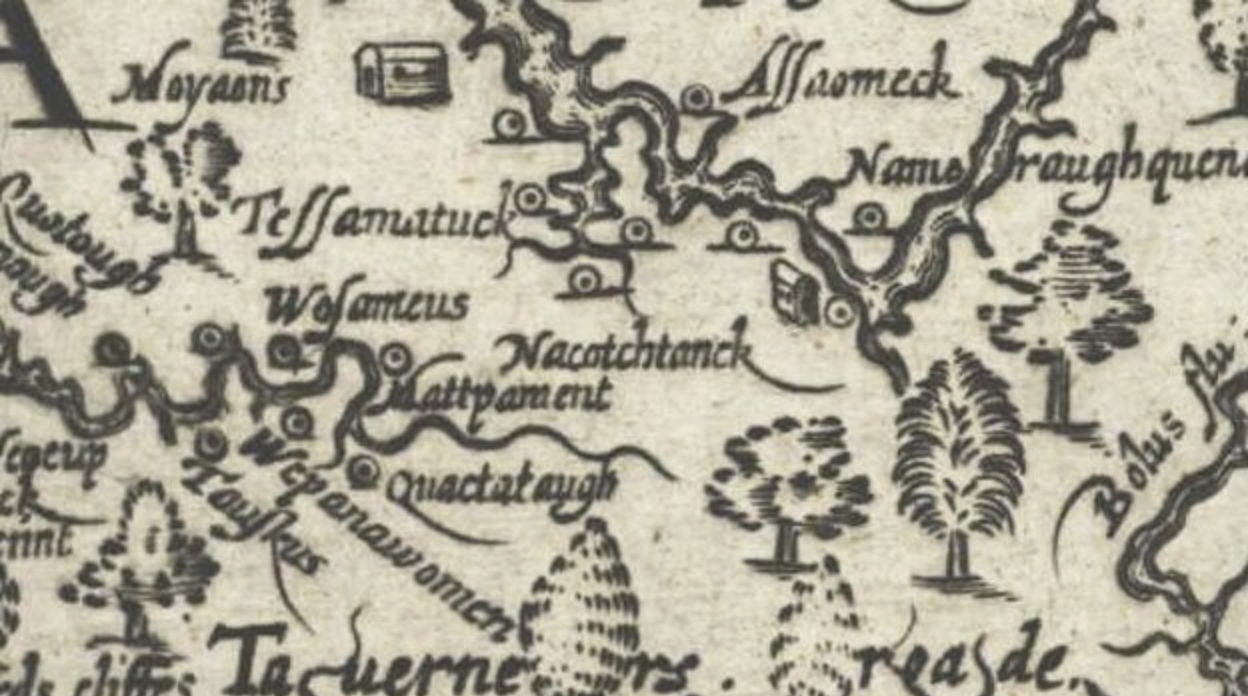
In an area rich with natural resources, the native peoples fished, hunted, grew crops, quarried stone, and traded with native people from distant regions. The 1608 explorations of Captain John Smith, the first European in the area, ultimately resulted in the European take-over and settlement of the land around Georgetown and the ultimate displacement of the local Native American residents.
Those Who Settled the Church’s Land Before Our European Ancestors
No honest history of Methodism, or any denomination anywhere in America, can begin without first acknowledging that the lands on which our churches now stand were taken from their original inhabitants by Europeans. The religious basis for what became the most continental land grabs in human history followed the first European footsteps in the “New World” almost immediately. Issued in 1493, months after Columbus landed in Hispaniola, Pope Alexander VI’s Papal Bull declared any land not inhabited by Christians available to be “discovered,” claimed, and exploited by Christian rulers. It also demanded that “barbarous nations be overthrown and brought to the faith.”
This “Doctrine of Discovery” became the theological foundation of all European property claims in the Americas, including the euphemistic “taming” of the American West. Writing for a unanimous US Supreme Court decision in 1823, Chief Justice John Marshall held “that the principle of discovery gave European nations an absolute right to New World lands.” The Vatican finally renounced its Doctrine of Discovery by papal bulletin in March, 2023, but by then, the damage had been done.
Deeds of property were an alien concept to Native Americans, who eventually lost rightful ownership of their lands by hook, by crook, or at gunpoint. The measles, cholera, and smallpox the Europeans brought with them only made their land grabs easier.
Within the present-day District of Columbia, pre-Columbian Native Americans included the Nacotchtank, an indigenous Algonquian people. Tohoga, a Nacotchtank village, was located on the site of present-day Georgetown. (For one online history of Native Americans in Washington, click here. See also A Walk Through Georgetown. Kevin Delany Publications, 1971).
In an area rich with natural resources, the native peoples fished, hunted, grew crops, quarried stone, and traded with native people from distant regions. The 1608 explorations of Captain John Smith, the first European in the area, ultimately resulted in the European take-over and settlement of the land around Georgetown and the ultimate displacement of the local Native American residents.
According to officials at the National Museum of the American Indian, there is no living Nacotchtank lineage left. Their numbers were decimated, and survivors were adopted into the Piscataway people, resulting in the loss of their original identity and descendancy. To read more about current-day Piscataway people and Georgetown, click here. Dumbarton knows that these historical injustices have gone unnoticed for far too long, and is currently considering how to recognize and honor our land’s original inhabitants in a meaningful way. We would welcome constructive suggestions.
